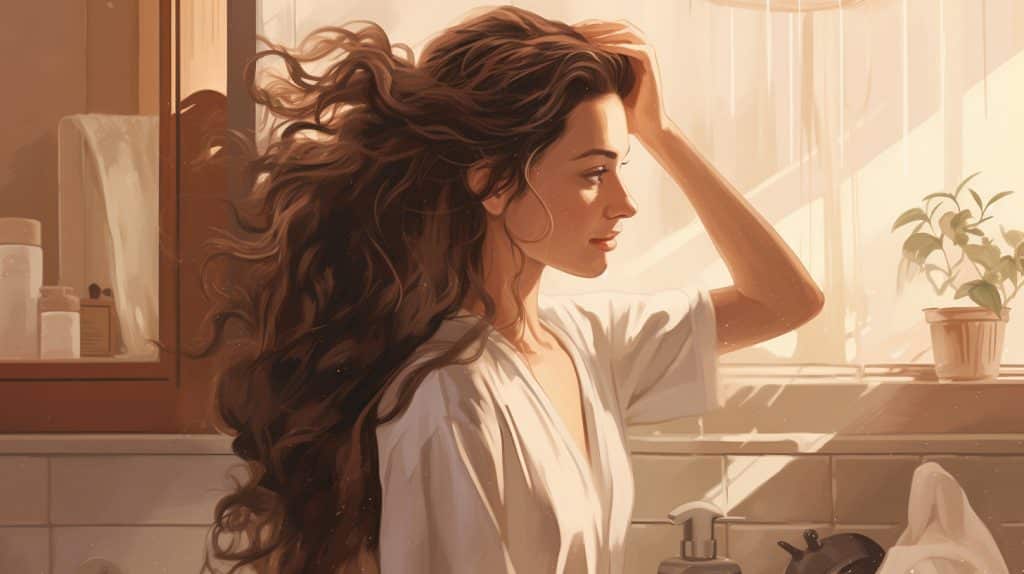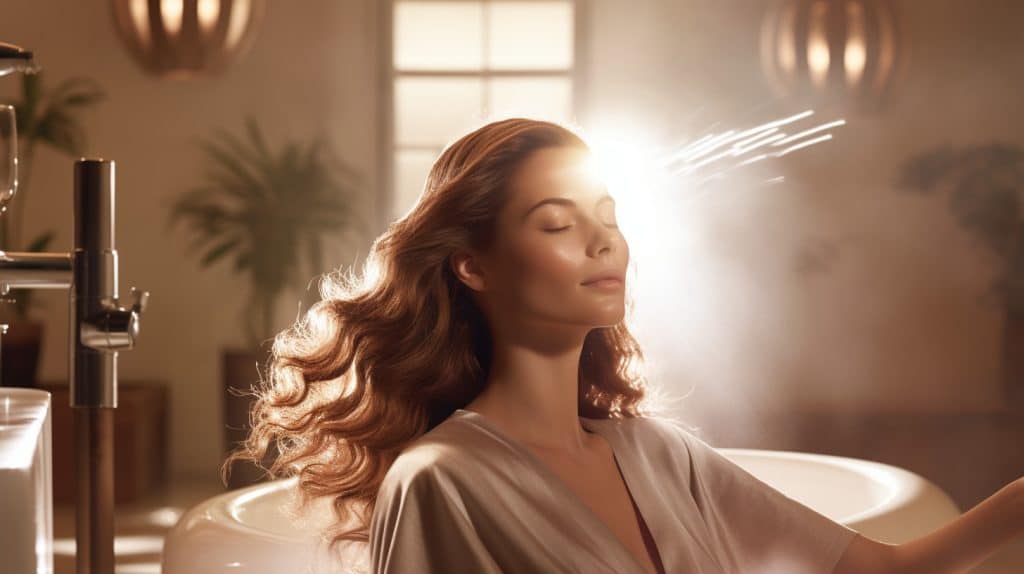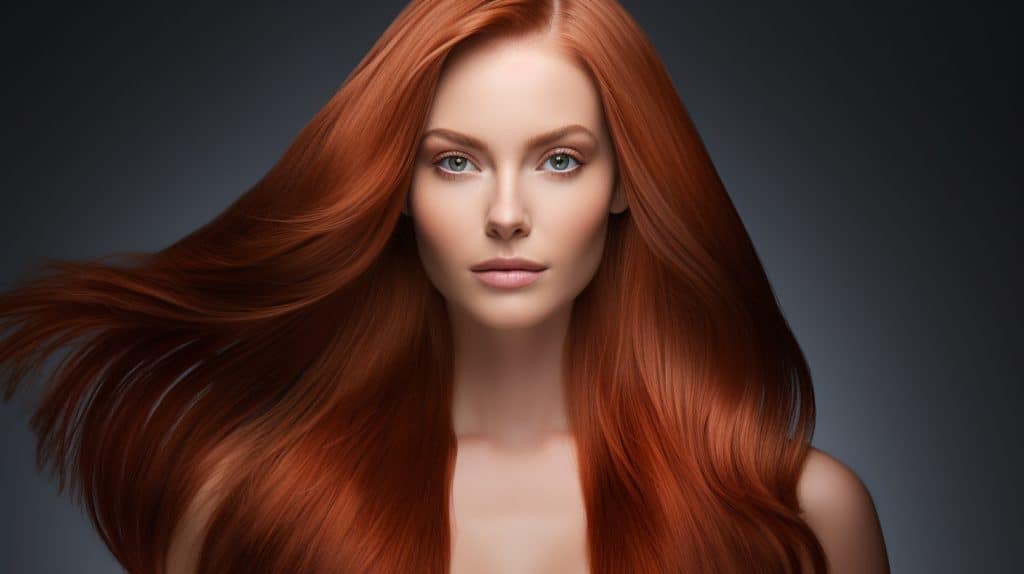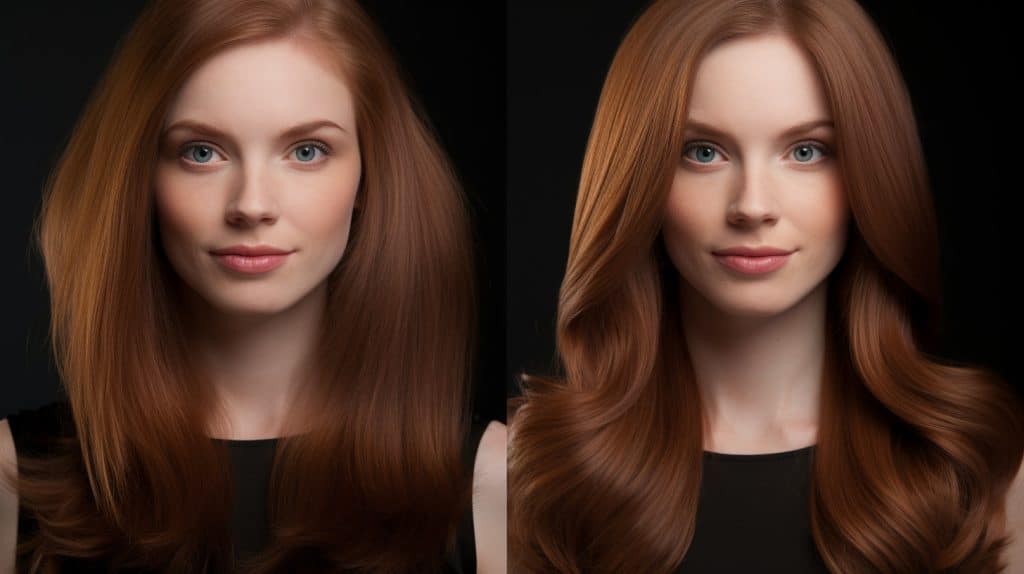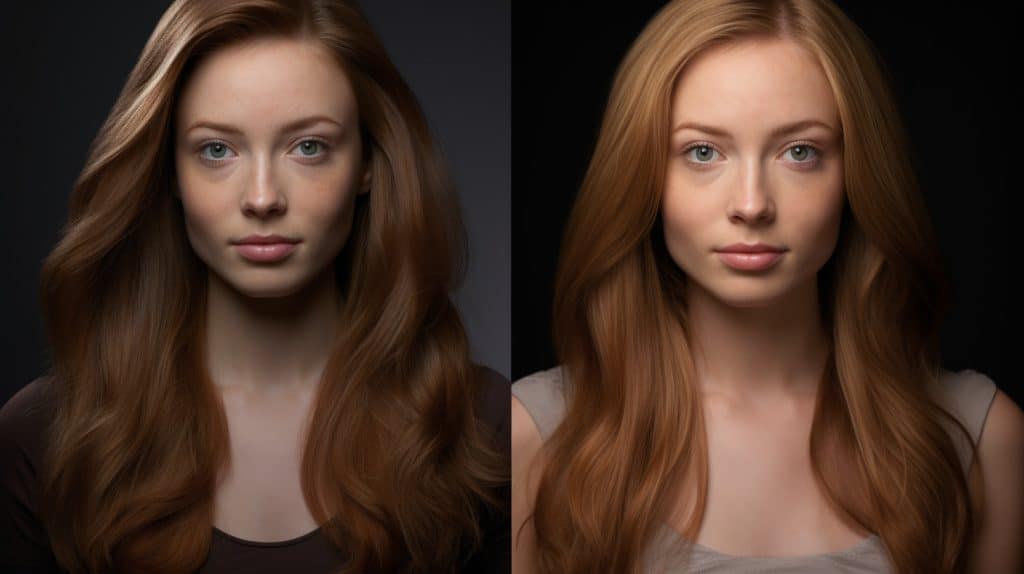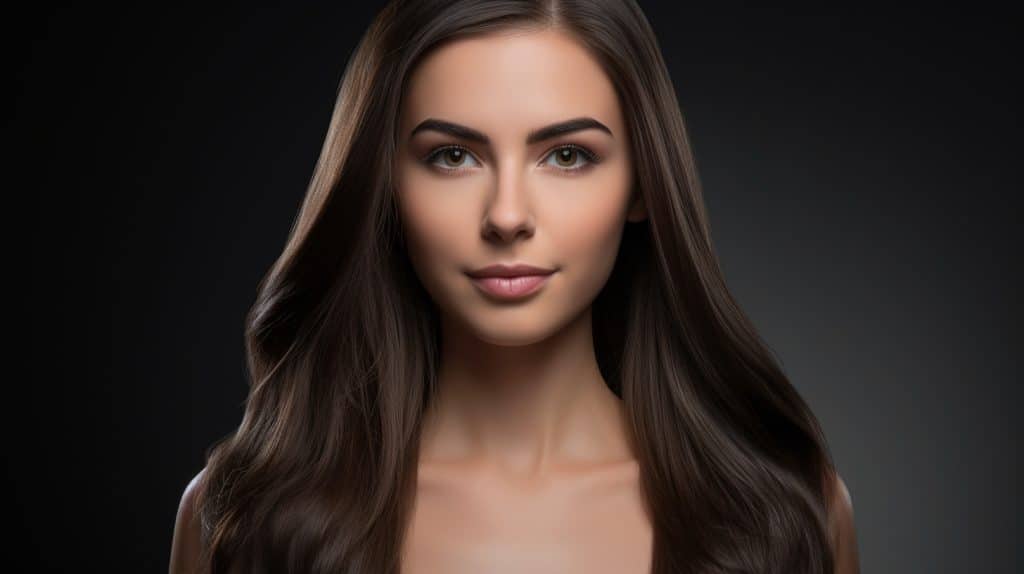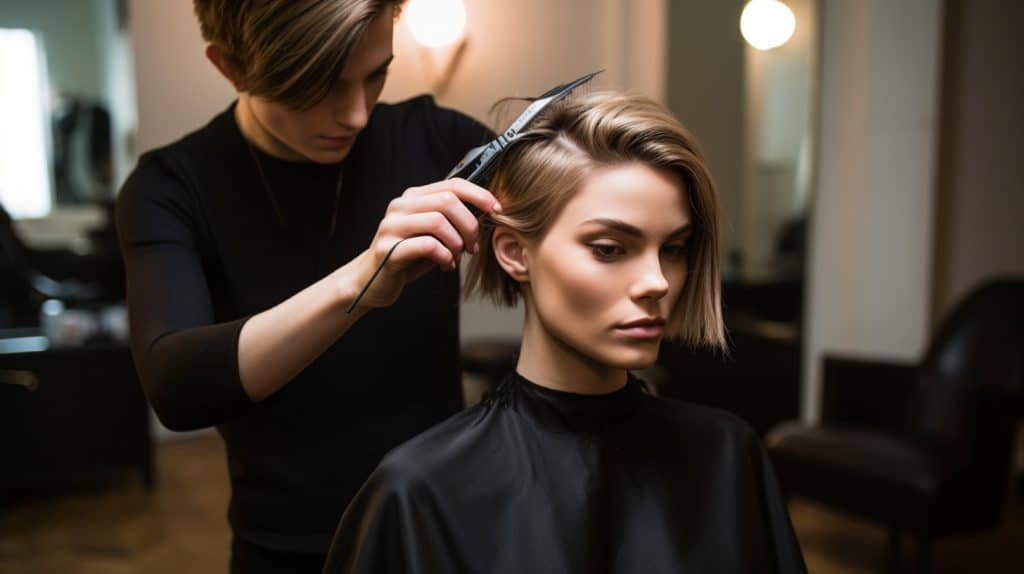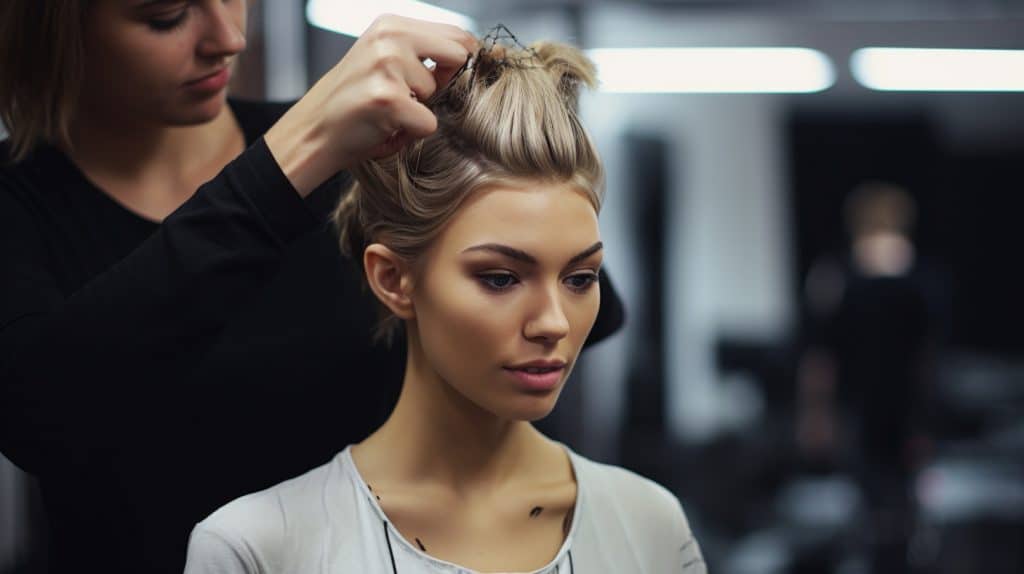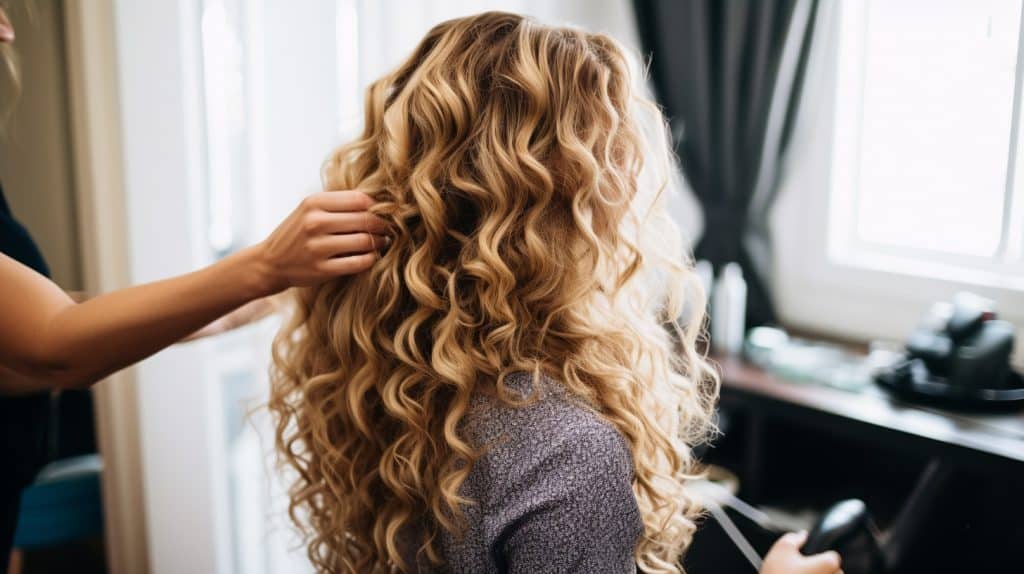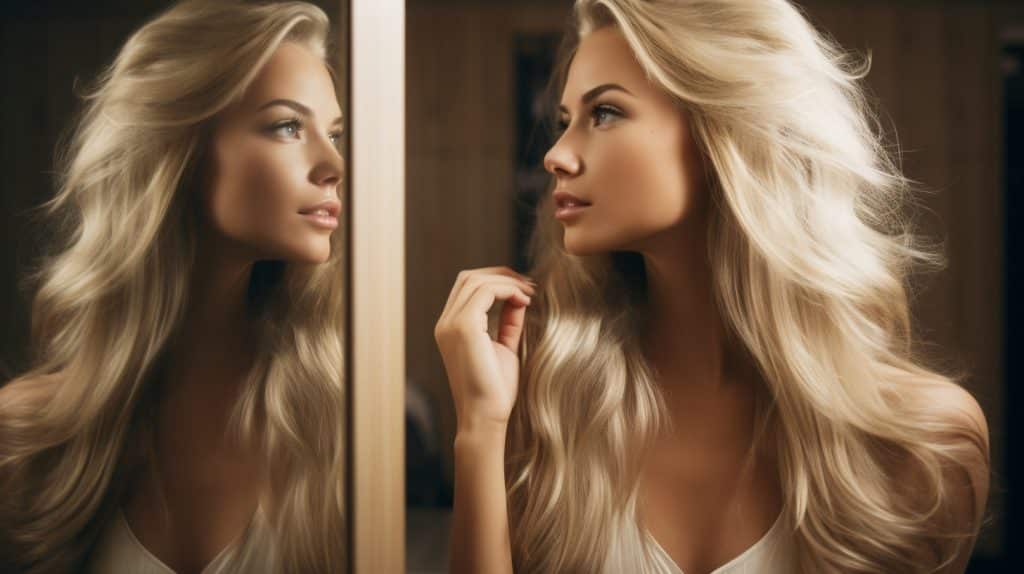In my experiences as a woman going through menopause, I know the physical and emotional challenges can be overwhelming. One of the most distressing symptoms is unexpected hair loss. Like a wilting flower, our confidence can wilt too.
But there's hope. Join me on my journey as I explore the latest evidence about menopause and hair loss. Together, let's discover practical solutions and gain the confidence to make informed decisions with regards to hair loss in women.
The Connection Between Menopause and Thinning Hair: What You Need to Know
As women enter the menopausal years, they may begin to notice changes in their hair follicle; thinning, dryness, and flakiness may occur due to hormonal changes. During menopause, estrogen and testosterone imbalances can cause hair loss and changes in texture.
Other factors that can affect hair include chronic inflammatory conditions, stressors, aging, lack of nutrients, and genetics.
It's important to seek help from a dermatologist in order to identify the underlying causes of hair changes and for personalized treatment recommendations.

Tried and tested methods such as minoxidil and steroid injections are effective in managing menopause and hair loss. Vitamin supplements can also help if there are deficiencies, but they may not surpass the effectiveness of drugs like minoxidil.
Adjusting hair care practices, such as reducing heat and chemical usage on your hair shaft, can protect brittle hair. Early examination and blood work can help identify the underlying causes of hair changes, and prompt intervention can prevent further hair loss and improve hair quality.
It is important to understand the connection between menopause and women with hair loss in order to take steps to manage the associated changes. Seeking help as soon as hair changes are noticed can lead to better intervention results.
Managing underlying hormonal imbalances may also have a positive impact on hair changes during menopause. Understanding the associated factors and taking prompt action can help women preserve their scalp hair and maintain healthy hair during the menopausal years.
Reason for Hair Loss During Menopause: Hormones and Beyond
Having experienced menopause, I've noticed that hormones aren't the only factor affecting my hair loss, and there's new evidence to suggest this is true. It's now known that menopausal hair loss can be caused by a variety of factors, including medical conditions and lifestyle factors.
Research suggests that hair loss during menopause is the result of a hormonal imbalance. Specifically, it’s related to a lowered production of estrogen and progesterone. These hormones help hair grow faster and stay on the head for longer periods of time.
When the levels of estrogen and progesterone drop, hair grows more slowly and becomes much thinner. A decrease in these hormones also triggers an increase in the production of androgens, or a group of male hormones. Androgens shrink hair follicles, resulting in hair loss on the head.
https://www.healthline.com
Central centrifugal cicatricial alopecia (CCCA), female pattern hair loss, and traction alopecia are all common types of menopausal hair loss. CCCA is often linked to comorbidities like breast cancer, high cholesterol, and diabetes. Female pattern hair loss is hereditary, whereas traction alopecia is caused by tight hairstyles.
Proper treatment for hair loss during menopause depends on the cause. For example, minoxidil can be used to treat female pattern hair loss, while antibiotics and corticosteroid injections may help with CCCA. Women with darker skin tones may need to adjust their hair care routine to keep their hair healthy. Moisturizing ingredients like vitamins A and E, jojoba oil, and shea butter can help prevent breakage and thinning. In some cases, a hair transplant may be necessary.
With the right treatment plan, menopausal hair loss can be minimized and managed.
How to Prevent Hair Loss and Strengthen Menopause Hair
Building on the previous discussion, I'm now ready to tackle the question of how to prevent hair loss and strengthen menopause hair. Menopause can be a difficult time for women, with symptoms such as mood swings, weight gain, and insomnia. But one of the most common side effects is thinning hair or hair loss. Thankfully, there are many steps women can take to protect their hair during menopause.

* Stress management and hormonal balance: Keeping stress levels in check is a great way to prevent hormonal imbalance. Practicing yoga and other relaxation methods can help fight menopausal symptoms, while regular exercise can reduce stress and promote hormonal balance.
* Balanced diet and supplements: A balanced, low-fat diet is the best defense against hair loss. Incorporate whole grains, fruits, and vegetables in every meal, and don't forget the mono-saturated oils like olive oil and sesame oil. Green tea and vitamin B6 and folic acid supplements are also recommended.
* Hydration and hair care practices: Staying hydrated is essential for overall body function. Aim for eight 8-ounce glasses of water per day, avoiding juices, sodas, and other flavored drinks with excess sugar. Hair care practices like avoiding heat tools, using natural hair color, and using a nourishing conditioner are also key.
By following these steps, women can better protect their hair from the effects of menopause and maintain healthy hair.
With the right treatment of hair loss, women can see a decrease in menopause and hair loss, and even hair regrowth. With a balanced diet, regular exercise, and proper hydration, women can promote their hair health and have a stronger and happier life.
Natural Remedies vs. Medical Interventions for Menopause-Related Hair Loss
Now that we've discussed steps to protect hair during menopause, let's explore the options for treating hair loss, including natural remedies and medical interventions. Women experiencing hair loss due to menopause can benefit from a variety of treatments to restore their hair density. Some women may find natural remedies to be a suitable approach while others may need medical interventions.
| Natural Remedies | Medical Interventions |
|---|---|
| Dietary Changes | Minoxidil |
| Herbal Supplements | Oral Prescription Drugs |
| Stress Reduction | PRP Injection |
| Scalp Massage | Low-Level Light Therapy |
Dietary changes such as increasing protein intake and avoiding processed foods can help reverse menopausal hair loss. Herbal supplements such as saw palmetto, biotin, and omega-3 fatty acids may also provide some relief. Stress reduction through meditation, exercise, and yoga can also help address the root cause of menopausal hair loss. Scalp massage with essential oils can improve circulation and stimulate follicles to promote hair growth.
Medical interventions such as minoxidil, oral prescription drugs, PRP injection, and low-level light therapy can also be used to treat menopausal hair loss. Minoxidil is an over-the-counter treatment that can be effective for hair loss. Oral prescription drugs such as spironolactone may block the effects of androgens or lower androgen levels.

Platelet-rich plasma (PRP) injection involves drawing the patient's blood, concentrating the platelets, and injecting them into the scalp to stimulate hair growth. Low-level light therapy is another form of intervention that can help stimulate hair growth.
It is important to identify the cause of hair loss before beginning any treatment. A visit to the primary care doctor is a great starting point for addressing hair loss. Further tests may be performed to investigate autoimmune inflammation or other underlying causes.
Natural remedies and medical interventions can both be used to treat menopausal hair loss. By taking the right steps, women can restore their hair density and regain their confidence.
Comprehensive Guide to Managing Menopause and Hair Loss: From Cause to Cure
I'm learning how to manage my hair loss and prevent further thinning. Hormonal changes during menopause can lead to hair loss due to decreased oestrogen levels and androgen hormone imbalances. Understanding the causes and symptoms of menopausal hair loss is key to finding the best treatment option.
Hair loss related to aging is often associated with men, but the reality is that more than half of women 50 and older may experience thinning hair or hair loss, according to a recent study in Menopause.
There are several reasons why women may experience hair loss, including nutrient deficiencies, extreme stress, genetics, having an internal disease or changes in hormones, which can be connected to pregnancy or menopause.
When determining if hair loss is caused by menopause, it’s important to consider the specific symptoms and know when to see a doctor. Once a proper diagnosis is made, possible treatment options can be explored.
https://www.forbes.com
Here is a comprehensive guide to managing menopause and hair loss:
* Check for nutrient deficiencies: Low levels of vitamin B12, folate, biotin, and riboflavin can be associated with hair loss. Blood tests can help determine if hair loss is due to nutrient deficiencies.
* Consider medications or treatments: Medications like minoxidil (Rogaine), finasteride (Propecia), and spironolactone can help promote hair regrowth. Low-level light therapy (LLLT) and platelet-rich plasma (PRP) are alternative treatments that have shown positive results in hair regrowth for postmenopausal women .
* Prioritize self-care practices: There's no guaranteed way to prevent hair loss related to menopause. However, successful treatment options are available. Follow a healthy diet rich in omega-3 fatty acids and B vitamins to support hair growth, prioritize self-care practices, and stress management to minimize hair loss.

Menopausal hair loss can be a difficult and distressing process, but with the right information and treatment, it can be managed effectively. With the right combination of treatments and lifestyle changes, thinning hair, or hair loss due to menopause can be treated and even reversed. Knowing the cause of your hair loss is the first step to finding the right treatment for successful hair regrowth.
Breakthroughs in Menopause Hair Loss Treatments: What Works?
Exploring the latest advancements in menopause hair loss treatments can help those suffering from hair loss to identify the best treatment for their individual needs. In recent years, there have been several breakthroughs in treating menopausal hair loss.
Minoxidil, a vasodilator, increases blood flow to the scalp and stimulates hair follicles. Dutasteride, a more powerful alternative to Finasteride, can effectively reduce hair loss. Ketoconazole, an antifungal and anti-inflammatory medication, has also been found to increase hair density in men.

Caffeine shampoo can be an effective treatment for pattern baldness. And for those seeking a permanent fix, hair transplantation is the only option, using either FUE or FUT methods to transplant follicles from the back of the head.
In addition to these treatments, reducing stress levels is also important for managing hair loss. Chronic stress is linked to hair loss as the adrenal glands produce cortisol which suppresses the production of hair growth proteins. By understanding the link between stress and hair loss, individuals can better manage their hair thinning and hair cycle.
Finding the right treatment for menopausal hair loss can be a challenge, but there are options available. With the right research and understanding, individuals can make an informed decision as to which treatment is best for their individual needs.
from Life & Healthy Living https://lifeandhealthyliving.com/menopause-and-hair-loss-new-evidence/
via IFTTT
